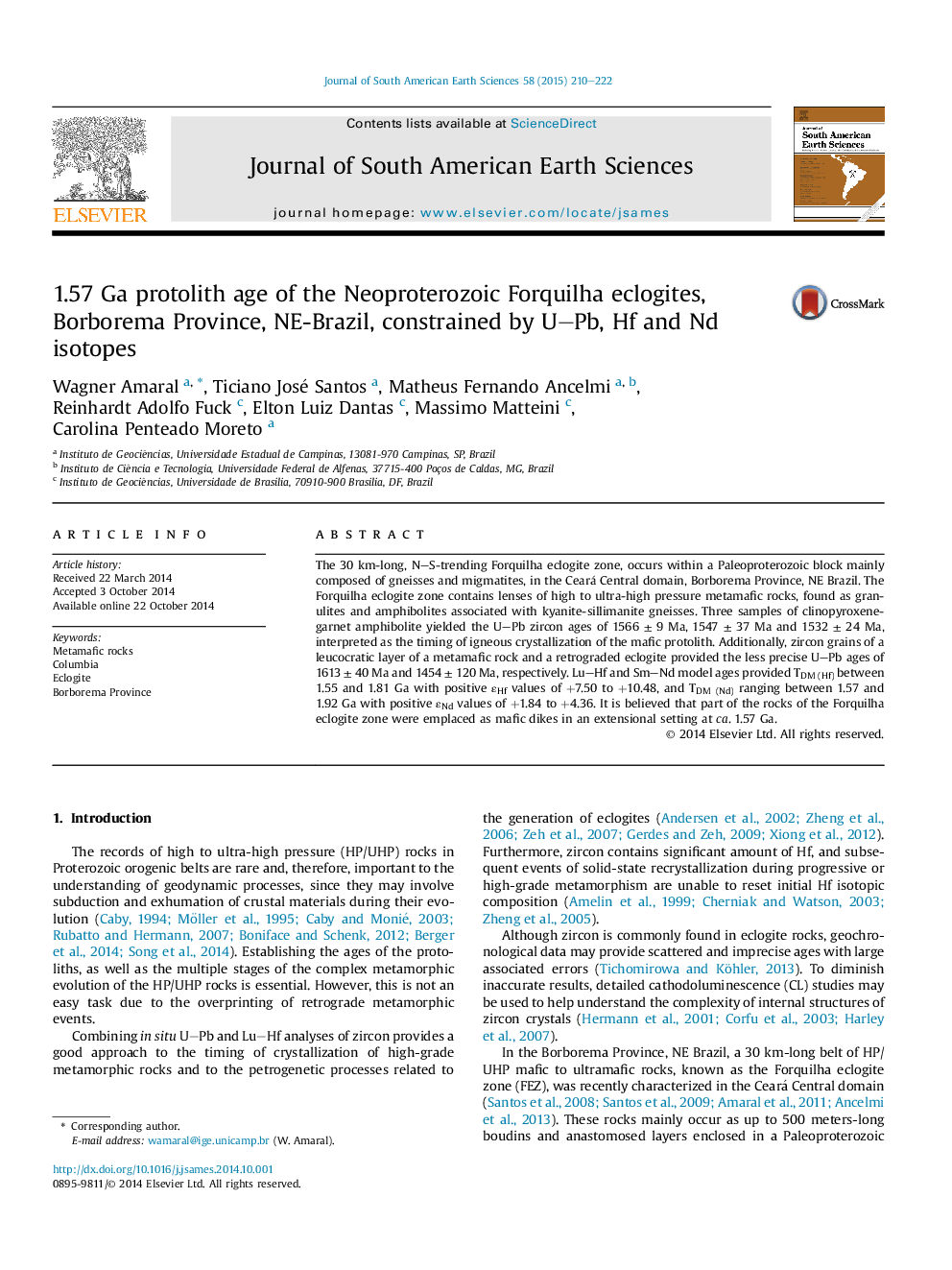| Article ID | Journal | Published Year | Pages | File Type |
|---|---|---|---|---|
| 4682245 | Journal of South American Earth Sciences | 2015 | 13 Pages |
•1.57 Ga protolith age of the metamafic rocks of the Forquilha eclogite.•These metamafic rocks were emplaced in an extensional setting.•The metamorphism that affected these rocks was related to the Brasiliano/Pan-African orogeny.
The 30 km-long, N–S-trending Forquilha eclogite zone, occurs within a Paleoproterozoic block mainly composed of gneisses and migmatites, in the Ceará Central domain, Borborema Province, NE Brazil. The Forquilha eclogite zone contains lenses of high to ultra-high pressure metamafic rocks, found as granulites and amphibolites associated with kyanite-sillimanite gneisses. Three samples of clinopyroxene-garnet amphibolite yielded the U–Pb zircon ages of 1566 ± 9 Ma, 1547 ± 37 Ma and 1532 ± 24 Ma, interpreted as the timing of igneous crystallization of the mafic protolith. Additionally, zircon grains of a leucocratic layer of a metamafic rock and a retrograded eclogite provided the less precise U–Pb ages of 1613 ± 40 Ma and 1454 ± 120 Ma, respectively. Lu–Hf and Sm–Nd model ages provided TDM (Hf) between 1.55 and 1.81 Ga with positive εHf values of +7.50 to +10.48, and TDM (Nd) ranging between 1.57 and 1.92 Ga with positive εNd values of +1.84 to +4.36. It is believed that part of the rocks of the Forquilha eclogite zone were emplaced as mafic dikes in an extensional setting at ca. 1.57 Ga.
